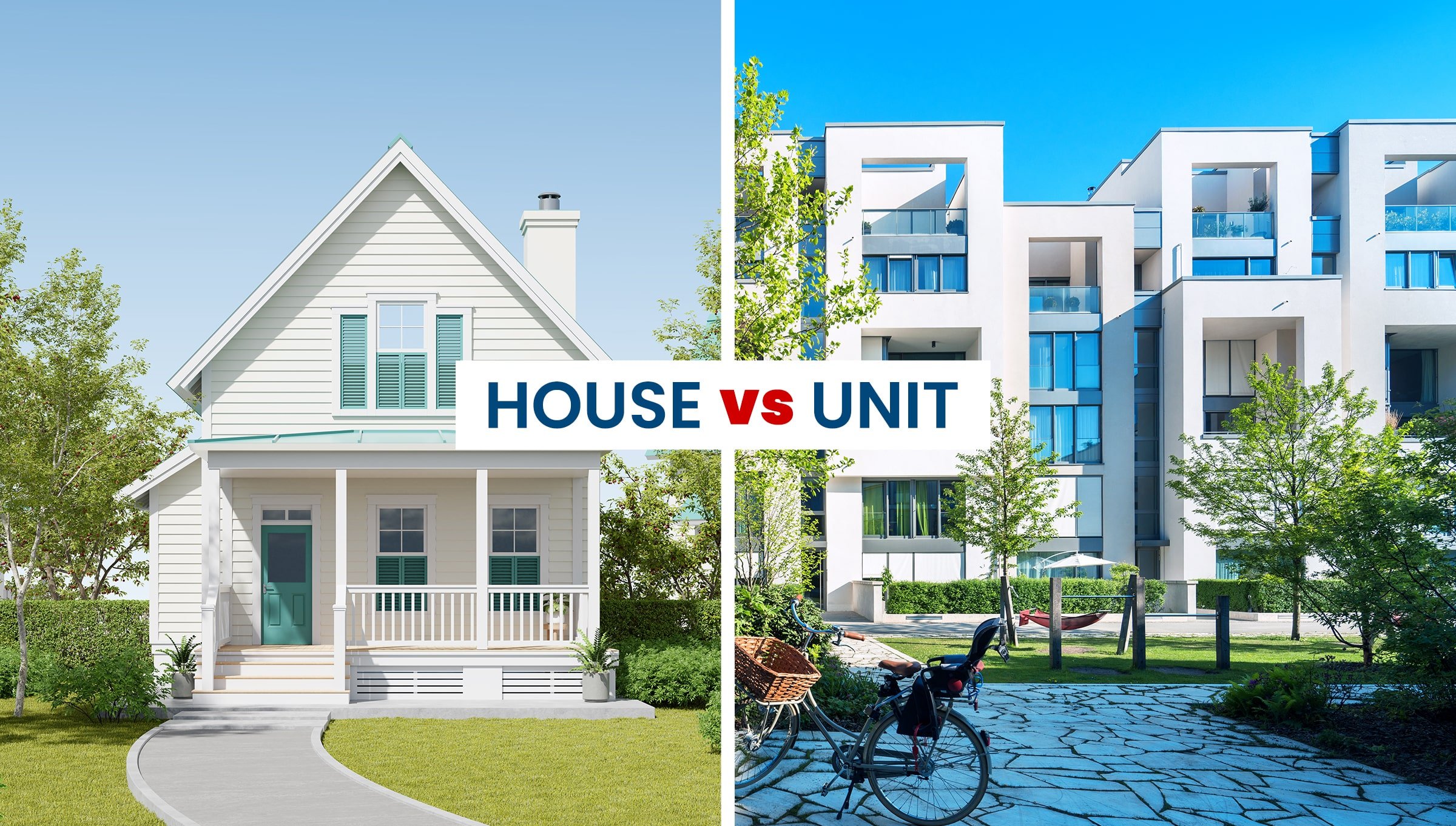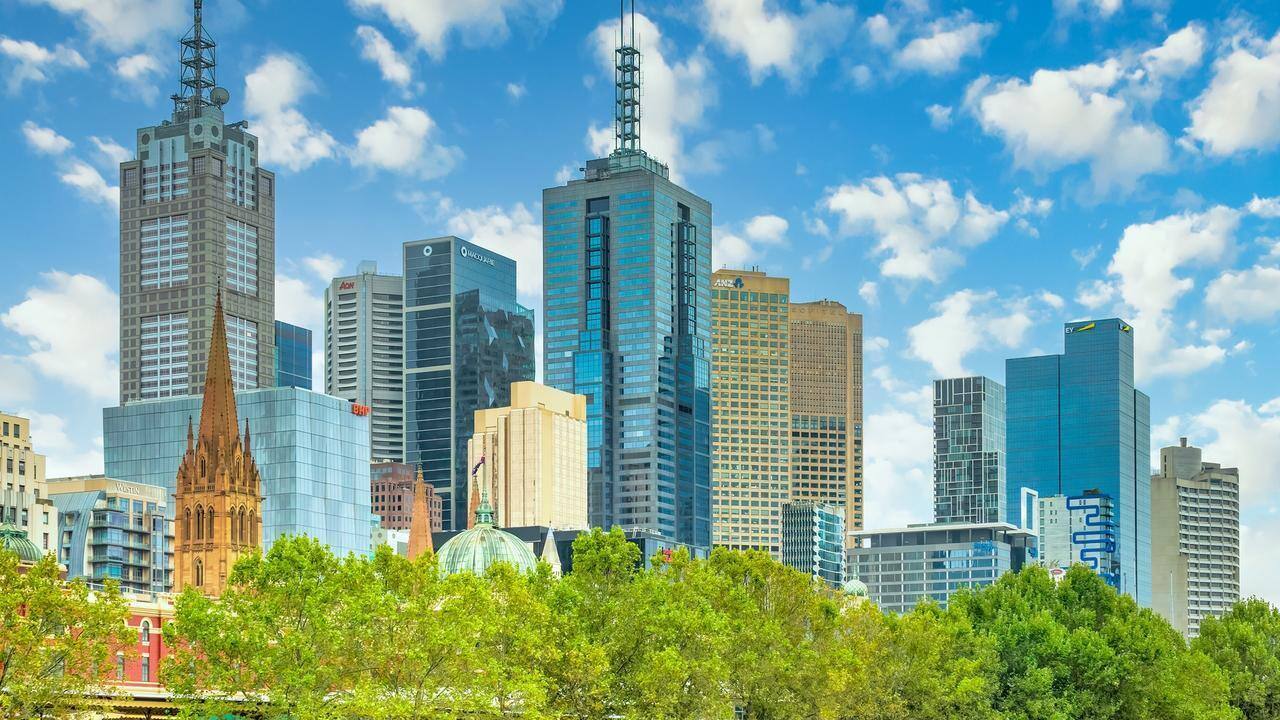Features > Property News & Insights > Housing Trends
“Mind the gap” - the growing disparity between Aussies who own houses and units

KEY POINTS
- CoreLogic says the gap between house prices and units in Australia’s capital cities has increased dramatically since the onset of COVID-19
- The data analytics company believe higher land values and Australians wanting more space during the pandemic have helped drive this trend
- However, CoreLogic says areas where the “house premium” is relatively small present excellent investment opportunities
- With strong population growth and a housing shortage, the increasing demand for well-located medium to high-density housing could see the gap start to close
We’ve heard a lot lately about the growing wealth divide between people who own property and those who don’t.
Now there’s a growing divide between Australians who own houses and those with apartments, villa units, and townhouses.
Research from CoreLogic shows that over the past four years, the so-called “house premium” has nearly tripled.
When the pandemic hit in early 2020, the difference between median capital city house and unit values was just 16.7%.
Four years later, that premium has jumped to 45.2%, or if you want to put a dollar value on it, $293,950.

Behind the numbers…
CoreLogic puts the widening gap down to big jumps in the value of land, what it calls the “scarcity factor” of houses in big cities, and a desire by many Australians for more space to live, work and play at home since the onset of the pandemic.
The company’s research director Tim Lawless says that while houses have historically been more expensive than units and have shown higher rates of capital gain, several factors have led to the recent large jump in price growth for detached dwellings.
“The house premium rose sharply through the pandemic upswing as more people sought out space and were more willing and able to live further afield in our cities,” Mr Lawless says.
“While we saw the premium contract through the early part of the rate hiking cycle as house values fell more than unit values, across the combined capitals the gap between house and unit values has since rebounded to a new record high, as house values once again rise at a faster pace than units.”
CoreLogic calculates that since the onset of the pandemic to January 2024, capital city house values have increased by 33.9% or $239,000.
Over the same period, unit values rose 11.2% or $65,235.
It's a similar story over the last year, with house values up 11.0% ($93,552) while unit values grew by 6.9% ($41,789).
Sydney shines...
Not surprisingly, Australia’s most expensive property market - Sydney - has seen the largest growth in the “house premium” since the pandemic, with the gap between house and unit values widening by almost 36 percentage points.
Melbourne, Perth, Adelaide and Brisbane have all seen the gap between houses and units grow between 15% and 16% over 4 years.
Of all the capital cities, only Darwin saw the gap reduce by -12.2% from pre-pandemic levels.
However, we can probably put that down to an overdue correction, as the “house premium” in the NT capital was an astonishing 67.6% in March 2020.
As Tim Lawless points out, while growth in the gap between houses and units hasn’t been uniform across the four years, there’s been a noticeable trend over the last year.
“While Sydney tops the table again for largest 12-month change in premium followed by Canberra, several cities have seen the premium shrink back a little, including Brisbane and Adelaide.”
“This could be reflective of homebuyers seeking out more affordable housing options, which has diverted more demand towards units,” Tim Lawless says.
Where the gap is great, prices are high…
Unsurprisingly, some of Australia’s most expensive suburbs dominate the Top Ten capital city list where the “house premium” is at its greatest - five are in Sydney, three are in Melbourne, and two are in Perth.
All are relatively close to their respective CBDs.

The top two - Bellevue Hill and Vaucluse in Sydney’s Eastern suburbs - have seen the gap between houses and units explode to more than 500%.
Perth’s Mosman Park, sandwiched between the Swan River and the ocean, is next at 431%, followed by busy Strathfield in Sydney’s inner west.
Armadale in Melbourne’s leafy inner south-east sees the top “house premium” in the Victorian capital, with the median house 372.7% higher in value than the median unit.
Where the gap is small, bargain hunters should take notice…
At the other end of the scale, the suburbs where the gap is the smallest tend to be on the outskirts of major cities, with Perth dominating the list.

However, CoreLogic’s Tim Lawless indicates first home buyers and savvy investors looking for good growth potential should take note of these areas.
“The suburbs with the smallest differential in price between a house and unit may offer good buying opportunities for those able to stretch themselves to secure a piece of land without the hefty premium we’re seeing more broadly across many parts of our cities,” he says.
“With houses typically yielding a stronger capital gain outcome over time, these suburbs with a lower house premium could be strong investment opportunities.”
He also indicates that with a growing population and a housing shortage, the big chasm we’ve seen open up between house prices and units may start to close.
“House prices have moved out of reach for a growing portion of the population, especially those seeking a first home or lower-income households,” Mr Lawless says.
“With housing affordability remaining a key challenge across Australia, the substantially lower price points across the medium to high-density sector are likely to become increasingly in demand as buyers become more willing to sacrifice space for proximity to essential amenities.”
“Alongside lower prices, medium to high-density housing options are often strategically located close to transport networks, major working nodes and high amenity precincts,” Mr Lawless says.
Stay Up to Date
with the Latest Australian Property News, Insights & Education.




.png?width=292&height=292&name=Copy%20Link%20(1).png)
 SIGN UP FOR FREE NEWSLETTER
SIGN UP FOR FREE NEWSLETTER








.jpg?width=1920&height=1080&name=Warning%2c%20You%20Might%20Be%20Facing%20Higher%20Taxes%20Soon%20(1).jpg)





.png?width=1920&height=1080&name=Rate%20Drops%20Signal%20BIGGEST%20Property%20Boom%20in%20DECADES%20(1).png)

.jpg?width=1920&height=1080&name=Labor%20vs%20Liberal%20These%20Housing%20Policies%20Could%20Change%20the%20Property%20Market%20Forever%20(1).jpg)
.jpg?width=1920&height=1080&name=QLD%20Slashes%20Stamp%20Duty%20Big%20News%20for%20Investors%20%26%20Home%20Buyers%20(1).jpg)
.jpg?width=1920&height=1080&name=Trump%20Just%20Slapped%20Tariffs%20%E2%80%93%20Here%E2%80%99s%20What%20It%20Means%20for%20Australia%20(1).jpg)
.jpg?width=1920&height=1080&name=Federal%20Budget%202025%20More%20Debt%2c%20No%20Housing%20%E2%80%93%20Here%E2%80%99s%20What%20You%20Need%20to%20Know%20(1).jpg)
.jpg?width=1920&height=1080&name=Australias%20Housing%20Crisis%20is%20about%20to%20get%20MUCH%20Worse%20(New%20Data%20Warns).jpg)
%20(1).jpg?width=1920&height=1080&name=Australias%20RENTAL%20CRISIS%20Hits%20ROCK%20BOTTOM!%20(2025%20Update)%20(1).jpg)
%20(1).png?width=1920&height=1080&name=Is%20Adelaide%20Still%20a%20Good%20Property%20Investment%20(2025%20UPDATE)%20(1).png)
.jpg?width=1920&height=1080&name=RBA%20Shocks%20with%20Rate%20Cuts!%20What%E2%80%99s%20Next%20for%20Property%20Investors%20(1).jpg)
%20(1).jpg?width=1920&height=1080&name=I%20Predict%20The%20Feb%20Rate%20Cut%20(My%20Price%20Growth%20Prediction)%20(1).jpg)
.png?width=1920&height=1080&name=Why%20Property%20Prices%20Will%20Rise%20in%202025%20Market%20Predictions%20(1).png)
.jpg?width=1920&height=1080&name=Why%20Investors%20Are%20Choosing%20Apartments%20Over%20Houses%202%20(1).jpg)
.jpg?width=1920&height=1080&name=Why%20Rate%20Cuts%20Will%20Trigger%20A%20Property%20Boom%20(1).jpg)
.jpg?width=1920&height=1080&name=Retire%20On%202Million%20With%20One%20Property%20(Using%20SMSF).jpg)
.jpg?width=1920&height=1080&name=4%20Reasons%20Why%20You%20Should%20Invest%20in%20Melbourne%20Now%20(1).jpg)
%20(1).jpg?width=1920&height=1080&name=Old%20Property%20vs%20New%20Property%20(Facts%20and%20Figures%20Revealed)%20(1).jpg)
%20(1).jpg?width=1920&height=1080&name=Will%20The%20New%20QLD%20Govt%20Create%20a%20Property%20Boom%20or%20Bust%20(My%20Prediction)%20(1).jpg)
%20Scott%20Kuru%20(1).jpg?width=1920&height=1080&name=Inflation%20Hits%20Three-Year%20Low%20(Will%20RBA%20Cut%20Rates%20Soon)%20Scott%20Kuru%20(1).jpg)
.jpg?width=1920&height=1080&name=How%20to%20Buy%20Investment%20Property%20Through%20SMSF_%20The%20Ultimate%20Guide%20(1).jpg)
.jpg?width=1920&height=1080&name=Victoria%20Slashes%20Stamp%20Duty%20Melbourne%20Set%20to%20Boom%20Scott%20Kuru%20(1).jpg)
.png?width=1571&height=861&name=Are%20Foreign%20Buyers%20Really%20Driving%20Up%20Australian%20Property%20Prices%20(1).png)
.jpg?width=1920&height=1080&name=The%20Single%20Factor%20That%20Predicts%20Property%20Growth%20Regions%20(1).jpg)
%20Scott%20Kuru%20(1).jpg?width=1920&height=1080&name=My%20Prediction%20On%20Rates%20%26%20Negative%20Gearing%20(Market%20Crash)%20Scott%20Kuru%20(1).jpg)

-1.png?width=1920&height=1080&name=Major%20Banks%20Cut%20Rates%20Will%20RBA%20Follow%20Suit%20(Sept%20Rate%20Update)-1.png)
%20Scott%20Kuru-1.png?width=1920&height=1080&name=Rate%20Cut%20Coming%20What%20New%20Zealands%20Move%20Means%20for%20Australia%20(Sept%20Prediction)%20Scott%20Kuru-1.png)
%20(1).jpg?width=1920&height=1080&name=Buy%20when%20the%20interest%20rates%20are%20high!%20(Why%20you%20must%20buy%20now!)%20(1).jpg)
.jpg?width=1920&height=1080&name=Carms_Revised%20Taxes%20Due%20Aug%209%20YT%20Thumbnail02%20(1).jpg)
.jpg?width=1920&height=1080&name=Carms_Too%20Little%20Too%20Late%20Aug%207%20YT%20Thumbnail01%20(1).jpg)









.jpg?width=1920&height=1080&name=Carms_Rate%20Drop%20In%20July%20Jun%2010%20YT%20Thumbnail02%20(1).jpg)
.jpg?width=1920&height=1080&name=Carms_Own%20a%20Property%20V6%20Jun%205_YT%20Thumbnail%20(1).jpg)









.png?width=1920&height=1080&name=Artboard%201%20(3).png)






.jpg?width=1920&height=1080&name=YT%20thumbnail%20%20(1).jpg)

